The Essence of Minimalist Cabinet Design
Minimalist cabinets are defined by their sleek appearance, efficient storage solutions, and lack of ornate detailing. They focus on clean lines and simple color schemes to create an uncluttered living space. By eliminating excessive ornamentation, minimalist cabinets emphasize structure and organization, resulting in a cohesive and elegant design that maximizes usability.
Minimalist cabinetry is not just about aesthetics, as it is also about optimizing space and functionality. With the modern home becoming more streamlined and multi-functional, cabinets must adapt to these changing needs. Minimalist cabinets seamlessly blend into the overall design of a home, creating a sense of harmony and balance. Whether in kitchens, bathrooms, or living spaces, their clean and refined look ensures that they complement a wide range of interior styles.
The core principle of minimalist cabinetry is “less is more.” This means that every design choice, from materials to storage solutions, is intentional. The absence of decorative elements allows the beauty of the materials and craftsmanship to shine through. Moreover, the simplicity of minimalist cabinets makes cleaning and maintenance easier, as there are fewer crevices and intricate details to manage.
Important Features of Minimalist Cabinets
The following are some essential features of minimalist cabinet designs:
- Flat-panel doors for a smooth and streamlined look, reducing visual distractions and enhancing modern appeal. These doors create a clean and sophisticated aesthetic while emphasizing functionality.
- Hidden or integrated handles to maintain a seamless appearance, contributing to a sleek and uncluttered design. Handleless cabinets rely on touch-latch mechanisms or recessed grips, further reinforcing the minimalist look.
- Neutral color palettes to create a calm and spacious environment, allowing for easy integration with various interior styles. Whites, grays, beiges, and muted tones work best to evoke a sense of tranquility.
- High-quality materials that enhance durability and aesthetic appeal, ensuring that the cabinets remain functional and stylish for years to come. Options such as wood veneer, lacquer, matte laminates, and even glass can be used to add depth and texture.
- Efficient storage solutions such as pull-out drawers, lazy Susans, and built-in organizers that optimize space utilization and improve accessibility. By prioritizing storage efficiency, minimalist cabinets eliminate unnecessary clutter and create an organized environment.
- Minimal hardware to reinforce the simplicity of the design while maintaining practicality. Streamlined metal accents, soft-close hinges, and concealed mechanisms contribute to an effortless user experience.
- Soft-close mechanisms that add to the functionality and elegance of the cabinets by preventing slamming and wear over time. This feature enhances durability and ensures that the cabinets remain in pristine condition for years to come.
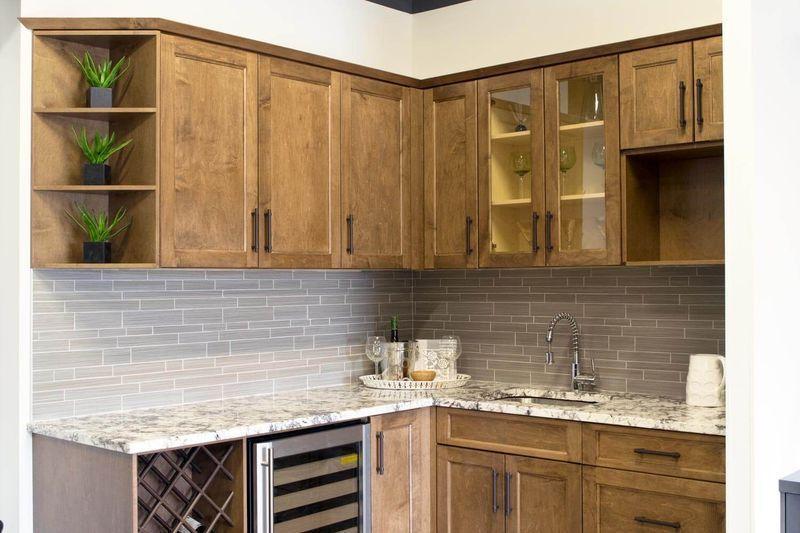
Read more: Bring Nature-Inspired Elegance to Your Kitchen Cabinet with Earth Tones
By focusing on these fundamental elements, minimalist cabinets can create a refined and modern atmosphere that prioritizes efficiency and sophistication. Whether you are redesigning a kitchen, bathroom, or living area, integrating these key features can elevate the overall aesthetic and functionality of your space.
Minimalist Cabinet Design Ideas
1. Consider Flat-Front Cabinetry
Flat-front cabinetry, also known as slab-door cabinets, is a hallmark of minimalist cabinet design. These cabinets feature smooth, unadorned surfaces that create a sleek and streamlined look. Opting for flat-front cabinets eliminates unnecessary detailing, allowing the natural beauty of the materials to stand out.
To enhance their appeal, consider using matte finishes for a sophisticated look or high-gloss finishes for a modern aesthetic. Additionally, materials such as laminate, wood veneer, or lacquer can be used to create a stunning visual effect while maintaining durability.
2. Incorporate Handleless Designs
To further enhance the minimalist cabinet look, consider handleless cabinet designs. Integrated handles or push-to-open mechanisms eliminate the need for external hardware, resulting in a more seamless and cohesive look.
This approach contributes to the clean lines characteristic of minimalist design while adding a touch of modern sophistication to your space. Soft-close technology can also be incorporated to enhance usability while maintaining the silent, sleek nature of the cabinets.
3. Utilize Natural Materials
Incorporating natural materials such as wood, stone, or metal can add warmth and texture to minimalist cabinets. For instance, wooden cabinets with a subtle grain can provide a sense of organic beauty without overwhelming the simplicity of the design.
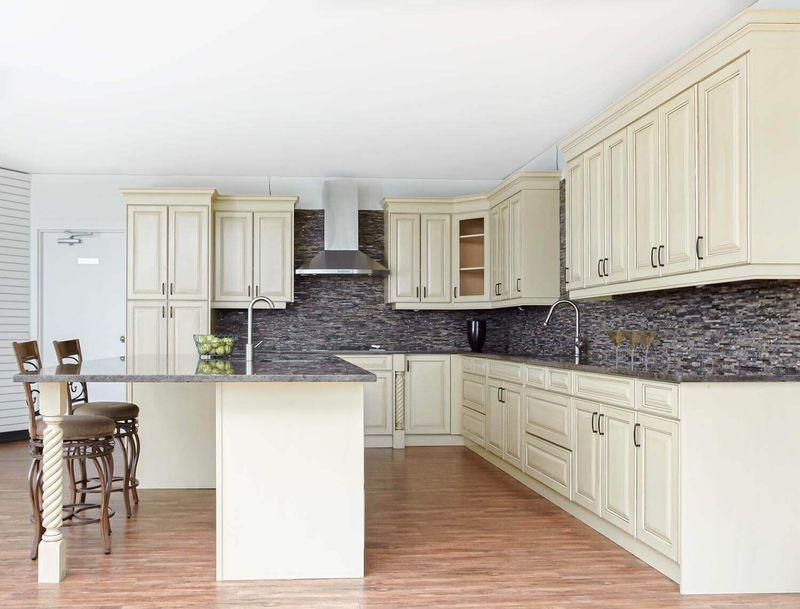
Read more: Pros And Cons Of Frameless Kitchen Cabinets In Modern Kitchens
Similarly, stone countertops paired with minimalist cabinets create a harmonious balance between sleekness and natural elegance. Opting for sustainable materials like bamboo or reclaimed wood can further enhance the eco-friendly aspect of minimalist designs.
4. Opt for a Neutral Color Palette
A neutral color palette is essential in minimalist cabinet design, as it fosters a sense of calm and spaciousness. Shades of white, gray, beige, and black are commonly used to create a serene backdrop that allows the form and function of the cabinets to take center stage.
Additionally, a monochromatic color scheme can make the space appear larger and more open, enhancing the overall minimalist effect. You can introduce subtle contrast by incorporating different textures, such as matte and glossy surfaces, to add depth without compromising simplicity.
5. Incorporate Open Shelving
Open shelving can be a practical and aesthetic addition to minimalist cabinets. It provides easy access to frequently used items while maintaining an open and airy feel. However, it is important to curate the displayed items carefully to avoid visual clutter.
Combining open shelves with closed cabinets allows for both display and concealed storage, achieving a balanced minimalist cabinet look. Floating shelves with concealed brackets are an excellent option, as they contribute to a seamless and modern appearance.
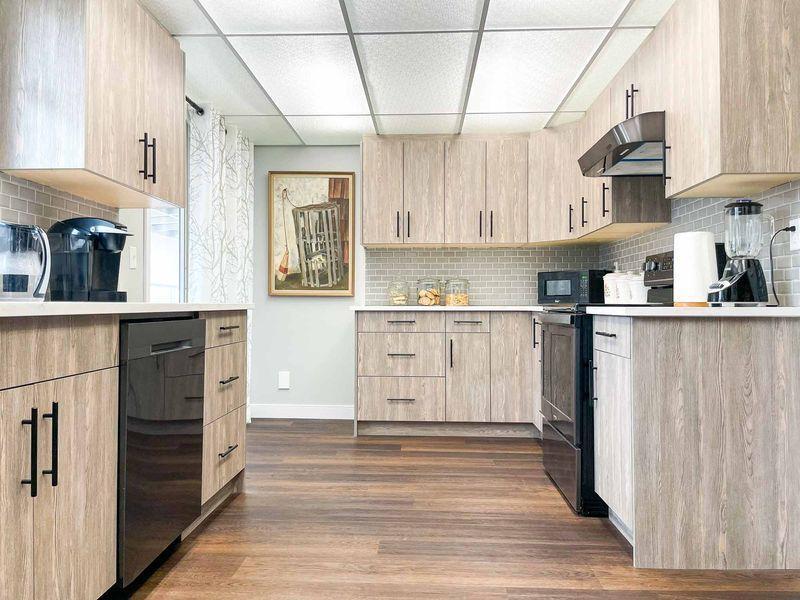
Read more: The Role Of Custom Cabinet Colours For Kitchens And Bathrooms
6. Focus on Functionality
Functionality is at the core of minimalist cabinets. Ensure that your cabinets are designed to meet your storage needs efficiently. This may involve incorporating pull-out drawers, adjustable shelves, or built-in organizers to maximize space utilization.
By prioritizing function, you can maintain the minimalist cabinet principle of “less is more” while ensuring practicality. Thoughtful design elements such as under-cabinet lighting or motion-activated doors can further enhance convenience while preserving a clean aesthetic.
7. Integrate Appliances
In modern minimalist cabinets, integrating appliances into the cabinetry can create a cohesive and uncluttered appearance. Panel-ready appliances that match the cabinet finish allow for a seamless look, preventing disruptions in the visual flow of the space.
This integration enhances the minimalist cabinet aesthetic by concealing bulky appliances and maintaining clean lines. Opt for built-in ovens, refrigerators, and dishwashers that blend into the cabinetry seamlessly, further reinforcing the minimalist theme.
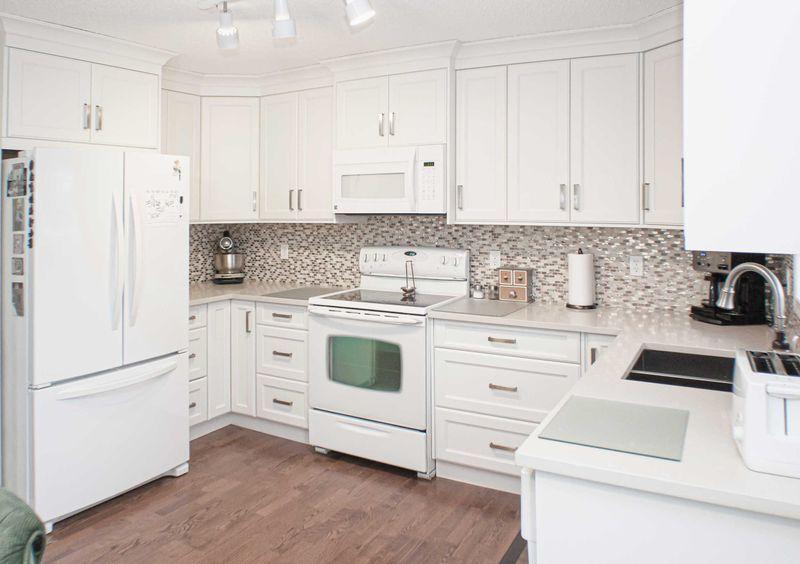
Read more: White Kitchen Cabinets: The Pros and Cons You Should Consider
8. Consider Open or Semi-Open Layouts
An open or semi-open kitchen design can create a more spacious appearance. Many households now tend to bridge the kitchen with a balcony or living area, enhancing the sense of openness. This layout not only maximizes natural light but also promotes a seamless flow between spaces, which is a key aspect of minimalist cabinets.
A kitchen island with built-in storage can further optimize space efficiency while serving as a functional centerpiece. Choosing cabinetry that extends to the ceiling can also help maintain a streamlined look while offering additional storage solutions.
9. Incorporate Textural Focus
To keep your kitchen from becoming too complicated, try to keep the focus on one textured finish. Let that texture be the visual center point of the space while keeping the rest of the design subdued.
For example, a white and gray marble backsplash can serve as a striking focal point in a minimalist cabinet kitchen. Textured wood grains or brushed metal finishes on cabinets can add depth and character without compromising the minimalist aesthetic.
10. Smart Storage Solutions
Minimalist cabinets should not compromise storage efficiency. Implementing smart storage solutions such as pull-out spice racks, deep drawers for pots and pans, and hidden compartments can enhance organization.
Modular storage options allow for customization based on individual needs, ensuring that every inch of space is utilized effectively. Built-in dividers and organizers further prevent clutter, maintaining a neat and functional kitchen environment.
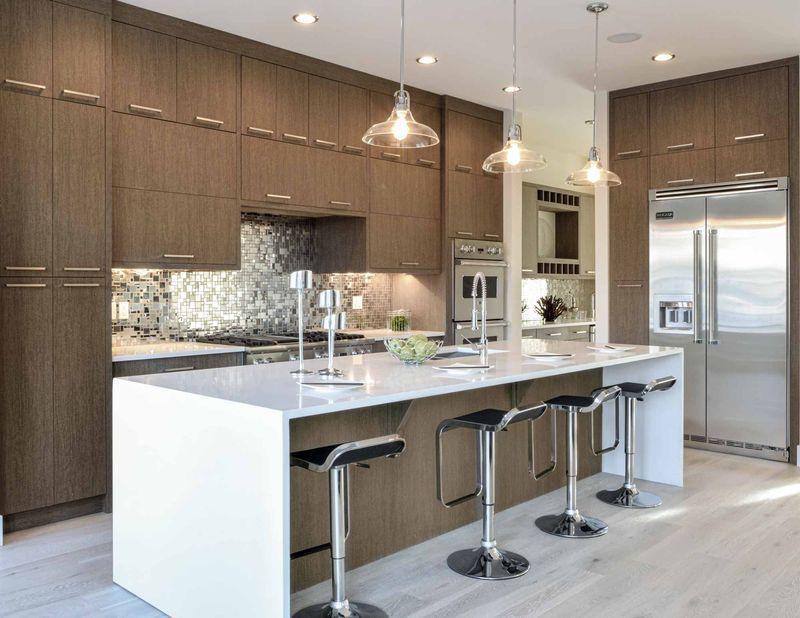
Read more: How To Clean Kitchen Cabinets: Essential Tips
11. Use of Reflective Surfaces
Reflective surfaces such as glass cabinet doors or high-gloss finishes can amplify natural light, making the space feel brighter and more open. This is particularly useful in smaller kitchens where maximizing light is essential for maintaining an airy ambiance.
Mirrored backsplashes and metallic hardware accents can also contribute to a sophisticated and minimalist cabinet design without overwhelming the simplicity of the space.
Conclusion
Minimalist cabinet design offers a timeless and elegant approach to modern home interiors. By focusing on clean lines, functional storage, and a neutral color palette, Zen Living can work with you to create spaces that are both aesthetically pleasing and highly practical. Whether you’re renovating your kitchen, bathroom, or living area, incorporating minimalist cabinets can transform your home into a serene and organized haven. Contact us today to learn more.
Fill out our form for a free consultation, or you can give us a call at (587) 817-5182. Our team at Zen Living Kitchen & Bath is eager to work with you and hear all about your project ideas. We are dedicated to turning your vision into a reality.






